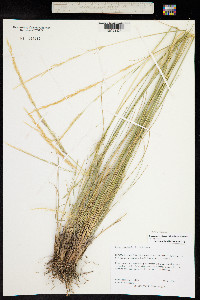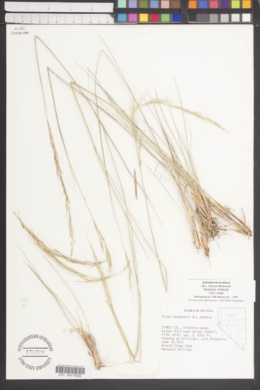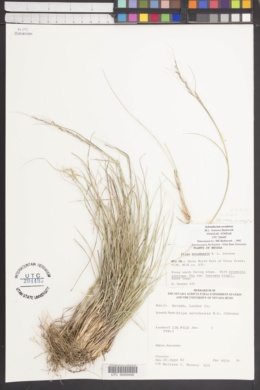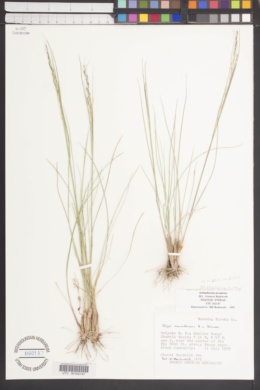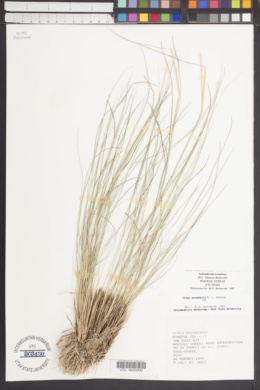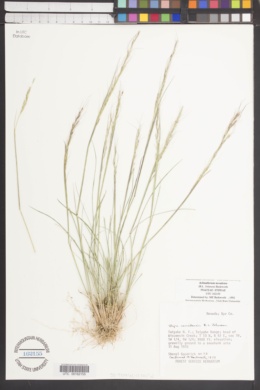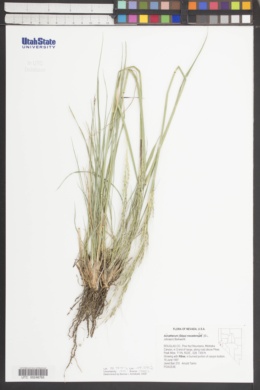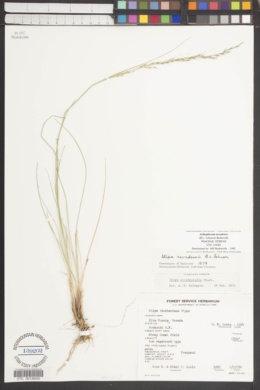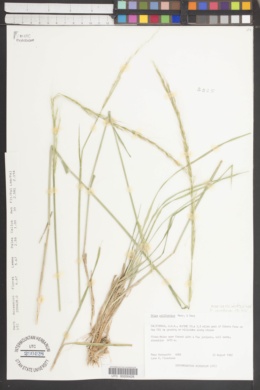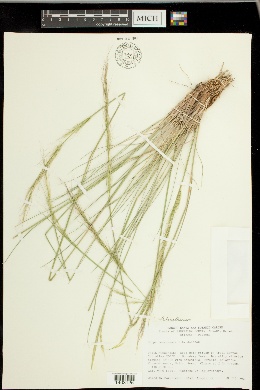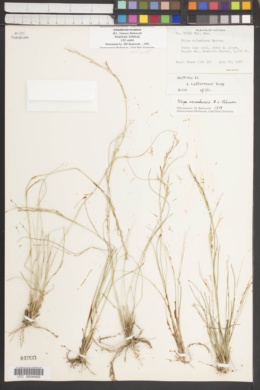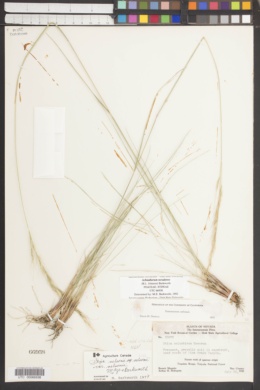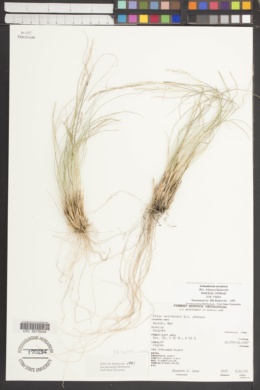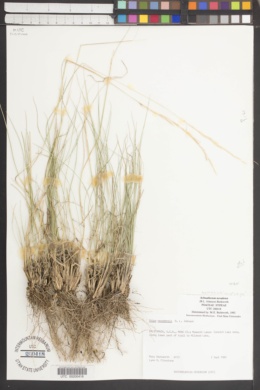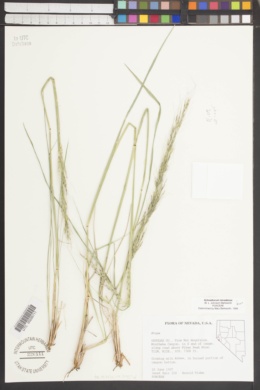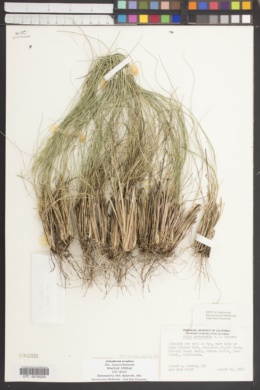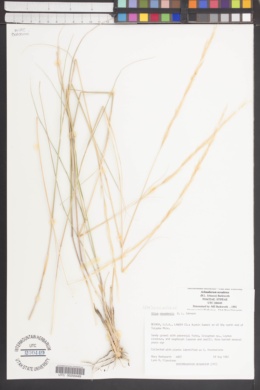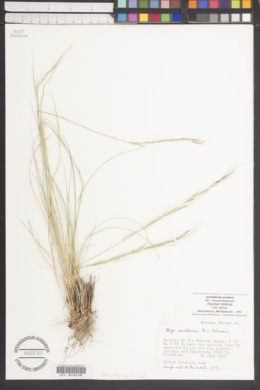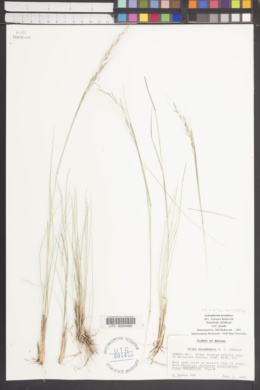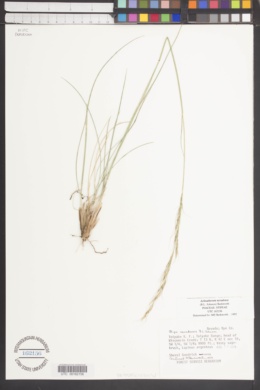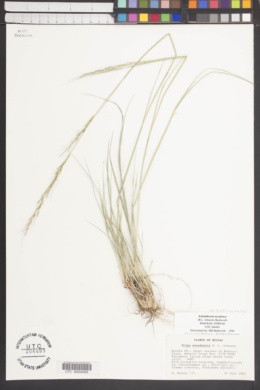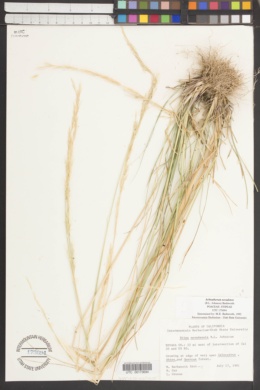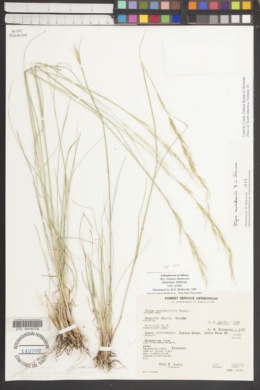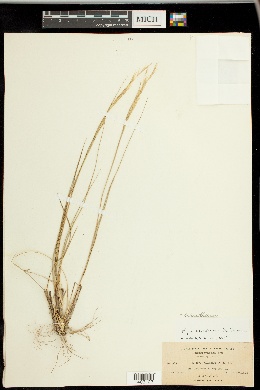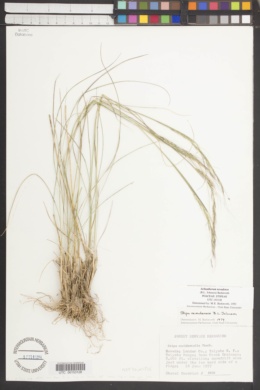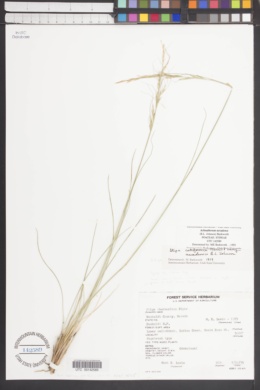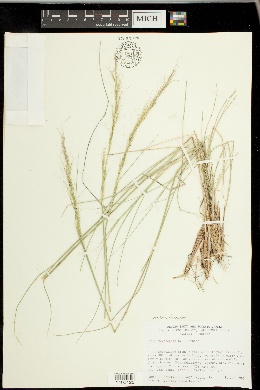Achnatherum nevadense
|
|
|
|
Family: Poaceae
Nevada Rice Grass, more...Nevada Needlegrass
|
Plants cespitose, not rhizom-atous. Culms 20-85 cm tall, 0.8-1.2 mm thick, usually retrorsely pubescent below the lower nodes, sometimes glab-rous, sometimes pubescent over the whole of the internodes; nodes 3-4. Basal sheaths glab-rous or pubescent, sometimes scabridulous, usually glabrous at the throat, becoming brown to gray-brown; collars, including the sides, glabrous; basal ligules 0.2-0.7 mm, truncate; upper ligules 0.3-1 mm, often wider than the blades; blades usually 10-25 cm long, 1-3 mm wide, usually involute, abaxial surfaces glabrous, adaxial surfaces more or less puberulent. Panicles 6-25 cm long, 0.4-1.5 cm wide; branches appressed, lower branches 2-7.5 cm. Spikelets appressed to the branches. Glumes subequal, 7-14 mm; lower glumes 0.6-0.9 mm wide; florets 5-6.5 mm long, 0.6-1 mm thick, fusiform, terete; calluses 0.5-0.7 mm, sharp, dorsal boundary of the glabrous tip with the callus hairs rounded to acute; lemmas evenly hairy, hairs 0.5-1 mm at midlength, apical hairs 0.8-2 mm, longer than those at midlength and those at the base of the awn, apical lobes membranous, about 0.2 mm; awns 20-35 mm, persistent, twice-geniculate, first 2 segments pilose, with hairs 0.5-1.5 mm and of mixed lengths, terminal segment scabridulous to smooth; paleas 2.8-4.2 mm, 1/2-3/4 as long as the lemmas, pubescent, distal hairs usually about 1 mm, extending well beyond the apices, apices rounded; anthers about 2.5 mm, dehiscent, not penicillate. Caryopses 3-5.5 mm, fusiform. 2n = 68. Achnatherum nevadense grows in sagebrush and open woodlands, from Washington to south-central Wyoming and south to California and Utah. Johnson (1962) argued that it is an alloploid derivative of A. occidentale and A. lettermanii. The apical lemma hairs of Achnatherum nevadense appear longer than the lowermost awn hairs. This difference is not reflected in the lengths shown because a few of the basal awn hairs may be as long as those at the top of the lemma, but the majority are shorter. This is the best character for distinguishing A. nevadense and A. occidentale subsp. californicum from A. occidentale subsp. pubescens. In addition, in A. nevadense and A. occidentale subsp. californicum, the hairs on the first awn segments tend to look untidy because of their varied lengths and the different angles they make with the awn; those of A. occidentale subsp. occidentale and subsp. pubescens have basal awn segments with tidier looking hairs. Differentiating between Achnatherum nevadense and A. occidentale subsp. californicum can be difficult, but they differ in the shape of the boundary between the glabrous and strigose portions of the callus. In addition, A. nevadense is usually pubescent below the lower cauline nodes, and has paleas that are longer in relation to the lemmas. Plants of A. nevadense from Convict Creek Basin, California, are unusual in having culms that are glabrous below the lower nodes, but in other respects they correspond to A. nevadense. Achnatherum nevadense also resembles A. latiglume, but the latter species has blunter calluses and paleas that tend to be thicker and somewhat longer in comparison to the lemmas than those of A. nevadense. |
























